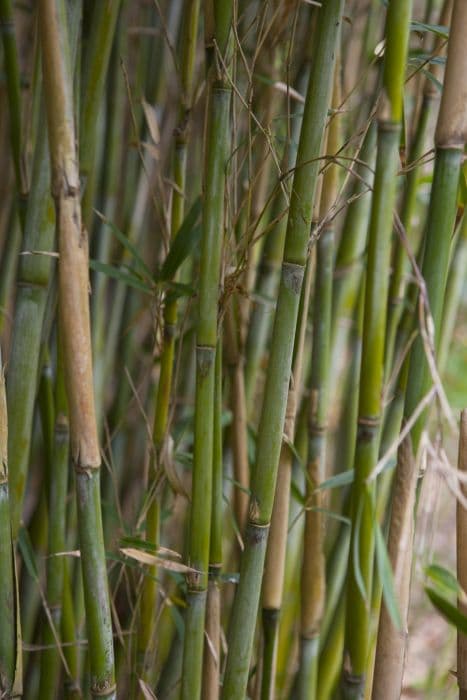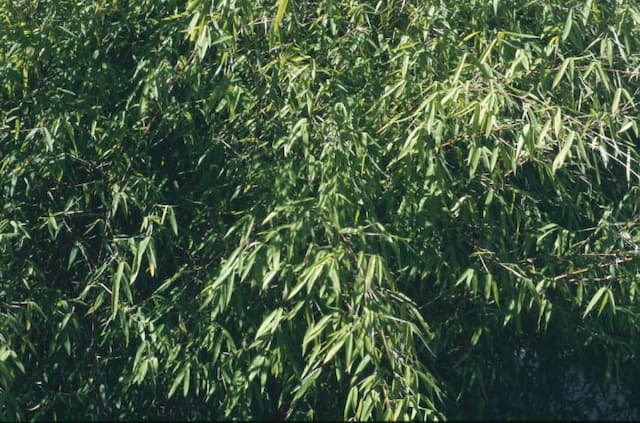Tufted hair grass 'Goldtau' Deschampsia cespitosa 'Goldtau'

ABOUT
'Goldtau' is smaller-growing than some of the D. caespitosa selections, with dark green leaves ageing to golden brown. The long-lasting flower plumes, held up to 75cm, are silvery brown and green, turning warm gold as they mature, giving a shimmering effect
About this plant
 Names
NamesFamily
Poaceae
Synonyms
Tufted Hairgrass, Gold Dew Tufted Hairgrass, Golden Dew Grass
Common names
Airochloa cespitosa, Aira cespitosa, Deschampsia bottnica, Deschampsia glauca, Deschampsia longiflora.
 Characteristics
CharacteristicsLife cycle
Perennials
Foliage type
Semi-deciduous
Color of leaves
Green
Flower color
Gold
Height
2-3 feet (60-91 cm)
Spread
1-2 feet (30-60 cm)
Plant type
Herb
Hardiness zones
4-9
Native area
Europe
Benefits
 General Benefits
General Benefits- Ornamental Value: Adds visual interest to gardens with its graceful, golden-yellow flowers.
- Drought Tolerance: The plant can survive with minimal watering once established, making it suitable for drought-prone areas.
- Low Maintenance: Requires minimal care, including less frequent mowing or trimming compared to traditional lawn grasses.
- Cold Hardy: It is able to withstand cold temperatures, making it a good choice for cooler climates.
- Erosion Control: Its fibrous root system helps to stabilize soil and prevent erosion on slopes or banks.
- Wildlife Habitat: Provides shelter and seed forage for birds and other wildlife.
- Adaptability: It can grow in a variety of soil types, from clay to sandy soils.
- Seasonal Interest: Offers year-round visual interest with changing foliage and flower colors across seasons.
- Texture Addition: Contributes a fine texture to the landscape, contrasting well with broad-leaved plants and hardscapes.
- Mass Planting: Suitable for mass planting to create a groundcover effect or a soft landscape feature.
 Medical Properties
Medical PropertiesThis plant is not used for medical purposes.
 Air-purifying Qualities
Air-purifying QualitiesThis plant is not specifically known for air purifying qualities.
 Other Uses
Other Uses- Artistic medium: Tufted hairgrass can be used by artists in dried floral arrangements, where its golden flower tufts create a whimsical and airy texture.
- Noise reduction: Planted in a dense cluster, Deschampsia cespitosa 'Goldtau' can help dampen sound in a noisy environment due to its thick foliage.
- Erosion control: Its fibrous root system makes it a suitable option for stabilizing soil and preventing erosion on slopes or banks.
- Habitat creation: When planted, this grass can become habitat for small insects and animals, contributing to local biodiversity.
- Photography: The plant's delicate form and golden color make it an interesting subject or backdrop for photographers, especially during the golden hour.
- Crafts: The dried inflorescences can be used for crafting, like in making bookmarks or as an addition to homemade paper for texture.
- Educational tool: Deschampsia cespitosa 'Goldtau' can be used in botany and ecology education to illustrate plant growth, habitat, and reproduction cycles with a visually appealing example.
- Winter garden interest: Because of its hardiness and persistence, it can provide visual interest in a winter garden when most other plants have died back.
- Green roofing: Its low-maintenance and hardy nature makes it a candidate for use in green roof installations, which require plants that can survive with minimal care.
- Special events decoration: The plant can be used as part of natural decor for rustic-themed weddings or other special events, contributing to a naturalistic ambiance.
Interesting Facts
 Feng Shui
Feng ShuiTufted Hair Grass is not used in Feng Shui practice.
 Zodiac Sign Compitability
Zodiac Sign CompitabilityTufted Hair Grass is not used in astrology practice.
 Plant Symbolism
Plant Symbolism- Resilience: Deschampsia cespitosa 'Goldtau', commonly known as Tufted Hairgrass, often symbolizes endurance and the ability to thrive in challenging conditions, due to its hardiness and perseverance in various environments.
- Gracefulness: With its delicate and fine textured foliage that catches the morning dew or sunlight, it represents elegance and poise in the plant world.
- Natural beauty: Tufted Hairgrass signifies an appreciation for the understated and natural beauty, as it's often praised for its simplistic and unassuming appearance.
- Growth and Abundance: As a grass that can spread and fill space, it embodies growth, fertility, and the concept of abundance.
 Water
WaterTufted hairgrass needs to be watered regularly to maintain evenly moist soil, especially during the growing season in spring and summer. It generally requires about 1 inch of water per week, which can be adjusted based on rainfall and soil type. Water the grass early in the morning to allow foliage to dry out during the day, thus reducing the risk of fungal diseases. In hotter, drier periods, water may be needed twice a week, while in cooler, wetter weather, less frequent watering may suffice. When watering, ensure that you provide a deep and thorough soaking, allowing the water to penetrate several inches into the soil to reach the root zone.
 Light
LightTufted hairgrass thrives best in full sun to partial shade conditions. It should be planted in a spot where it receives at least 4 to 6 hours of sunlight daily. However, in regions with intense sun, some afternoon shade will help prevent undue stress. This grass is adaptable to varying light conditions but will have the strongest growth and best flowering when provided with adequate sunlight.
 Temperature
TemperatureTufted hairgrass is hardy and can tolerate a wide range of temperatures, ideally growing in temperatures between 60°F and 75°F. It can survive minimum temperatures down to -20°F, making it suitable for many cooler climates. This grass remains evergreen in warmer zones and can handle summer temperatures up to 90°F without faltering.
 Pruning
PruningTufted hairgrass benefits from pruning to remove old, brown foliage and allow for fresh growth. Cut back the foliage in late winter or early spring before new growth begins, leaving about 2 to 3 inches of growth above the ground. Pruning once a year is typically enough, timed just as the temperatures begin to warm up but before the grass starts its active growing phase.
 Cleaning
CleaningAs needed
 Soil
SoilTufted Hair Grass prefers well-draining soil with a pH range of 5.5 to 7.5. A good mix can include loam, compost, and a small amount of sandy soil to improve drainage. Ensuring organic content will support the plant's health and growth.
 Repotting
RepottingTufted Hair Grass does not generally require frequent repotting; it can be done every 2-3 years or when the plant outgrows its container, to refresh the soil and divide if necessary.
 Humidity & Misting
Humidity & MistingTufted Hair Grass tolerates a wide range of humidity levels but thrives in moderate conditions. It does not require special humidity considerations when grown outdoors in its preferred climate.
 Suitable locations
Suitable locationsIndoor
Provide bright light, well-draining soil, don’t overwater.
Outdoor
Plant in sun to part shade; water regularly; well-draining soil.
Hardiness zone
4-9 USDA.
 Life cycle
Life cycleTufted Hair Grass 'Goldtau' (Deschampsia cespitosa 'Goldtau') starts its life cycle as a seed, germinating in spring when soil temperatures are suitable. Upon germination, it develops a root system and grass-like foliage, forming a dense, tussocky clump. Throughout the growing season, which spans spring to summer, it enters a vegetative stage followed by producing flowering stems that bear airy, golden panicles that are characteristic of the species and particularly ornamental in this cultivar. After pollination, the plant sets seed which can be dispersed by wind, allowing for self-propagation. As a perennial grass, it enters a period of dormancy in the winter, with the foliage dying back in colder climates. Come the following spring, Tufted Hair Grass 'Goldtau' will resume growth from its crown, repeating the cycle.
 Propogation
PropogationPropogation time
Spring to early summer
Propogation: The most popular method for propagating Tufted Hair Grass (Deschampsia cespitosa 'Goldtau') is by division. This process is best performed in the spring as the grass begins to grow actively, although it can also be done in early fall. To propagate, carefully dig up the clump of grass making sure to keep a good amount of soil around the roots. Gently separate the clump into smaller sections, ensuring that each division has a decent amount of roots and foliage. You can use a sharp knife or spade to assist with the division if the clump is particularly tough. Once divided, these sections can then be immediately replanted into their new locations, ideally spaced about 18 inches (approximately 45 centimeters) apart to allow enough room for growth. The divisions should be watered thoroughly after planting to help establish them in their new environment.









